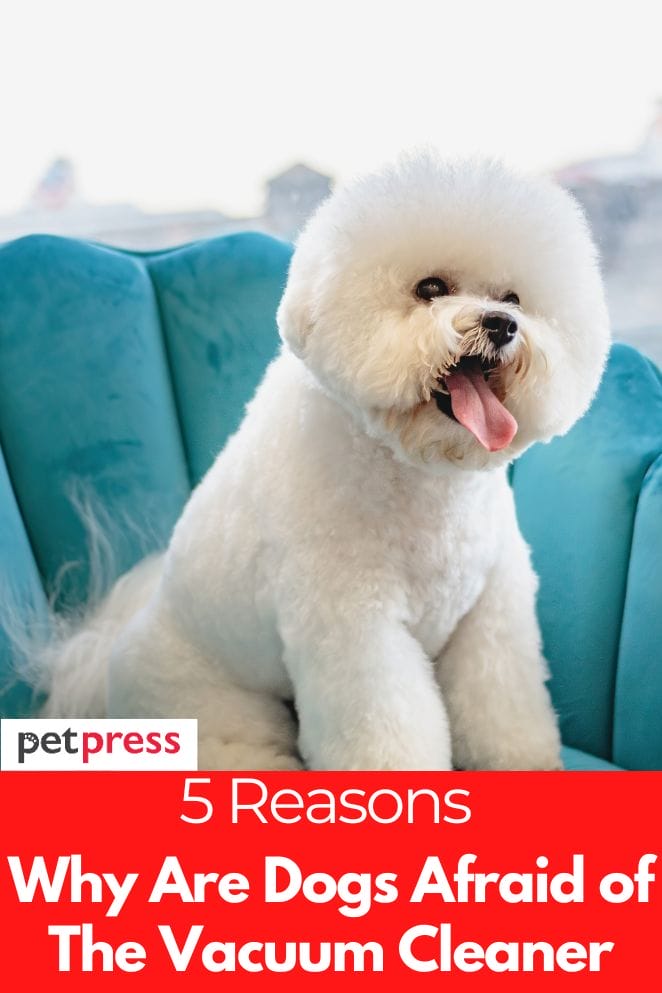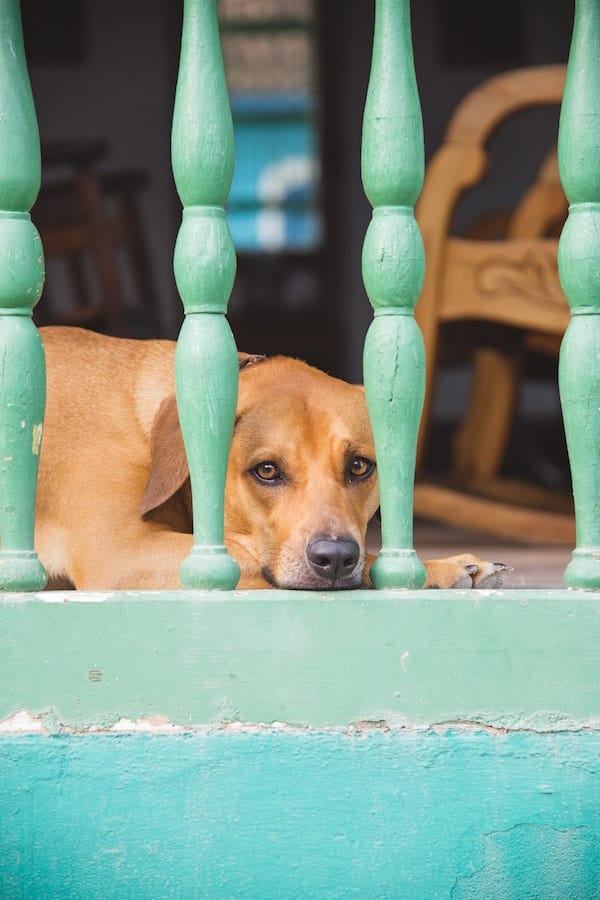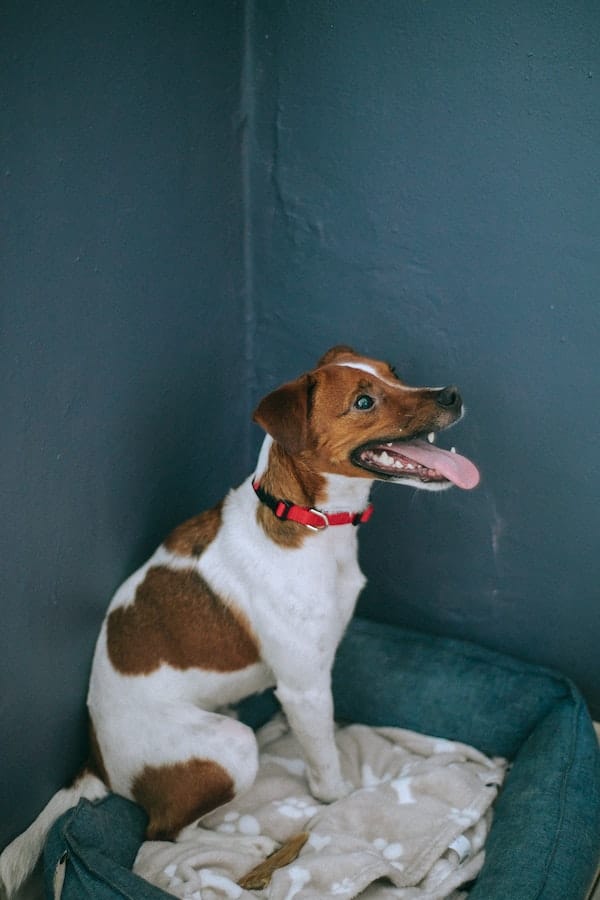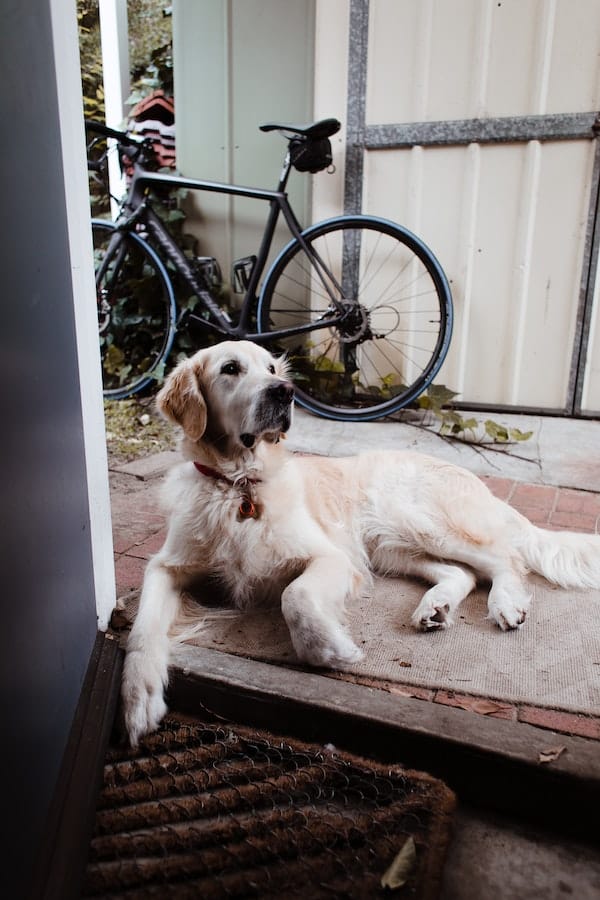
We’ve all seen it happen – a dog cowers in the corner as the vacuum cleaner comes out or immediately runs and hides under the bed.
But why are dogs afraid of vacuum cleaners?
Let’s take a look at some possible reasons.
Why does my dog hate the vacuum cleaner?

There are a few reasons why your dog might be afraid of the vacuum cleaner. It includes:
Loud noise and vibration from the vacuum may be scary and overwhelming for dogs.
Many dogs are afraid of the loud noise and vibration produced by vacuum cleaners, as these stimuli can be scary and overwhelming for them.
This is likely due to the fact that dogs have highly sensitive hearing, which makes even small noises seem much louder and more jarring to them than they do to humans.
Additionally, the vibrations produced by vacuums may be perceived as threatening or dangerous, causing dogs to feel anxious and fearful.
Some dogs associate the vacuum with cleanings or other stressful activities, like grooming or vet visits.
Many dogs associate the vacuum cleaner with stressful activities like grooming or vet visits.
This is likely because these types of activities can be perceived as frightening or threatening by dogs due to their heightened sensitivity to loud noise and vibrations, as well as other potentially stressful factors like being handled or restrained by humans.
Additionally, some dogs may have had negative experiences in the past when being vacuumed, such as getting accidentally stepped on or squashed by the machine.
Dogs may instinctively fear objects that move quickly across the ground.
Many dogs may instinctively fear objects that move quickly across the ground, such as vacuums or brooms.
This is likely due to their natural instinct to avoid potentially dangerous or threatening stimuli and because these types of moving objects can be perceived as a threat by dogs due to their heightened sensory sensitivity.
In addition, some dogs may have had negative experiences in the past when being vacuumed, broom-swept, or otherwise exposed to moving objects on the ground.
Experiencing negative associations with the vacuum at an early age.
Experiencing negative associations with the vacuum at an early age can have a significant impact on dogs’ fear of the vacuum in adulthood.
This is because, at an early age, dogs may be punished or scolded while the vacuum is running, which can cause them to develop negative associations with this particular stimulus.
As a result, they may come to see the vacuum as a source of fear or anxiety and may be more fearful of it when they encounter it in adulthood.
Some dogs may simply be afraid of new situations and unfamiliar objects.
Some dogs may simply be afraid of new situations and unfamiliar objects, and the sight of a vacuum cleaner can trigger that fear response.
This is because many dogs are naturally cautious or fearful around new things and may perceive the vacuum as a source of danger or threat.
Additionally, for dogs that have had negative experiences with vacuums in the past, such as being punished or scolded while the vacuum was running, seeing a vacuum can trigger their fear response and cause them to become anxious or afraid.
How do I get my dog not to be afraid of the vacuum?

There are several things you can do to help your dog overcome their fear of the vacuum. Some strategies include:
Try desensitizing your dog to the vacuum gradually over time.
One effective strategy for helping your dog overcome their fear of the vacuum is to gradually desensitize them to this stimulus over time.
This can be done by introducing your dog to the vacuum at a low volume and slowly increasing its intensity as they become more comfortable with it.
Work on building positive associations with the vacuum.
One effective way to help your dog overcome their fear of the vacuum is to work on building positive associations with this stimulus.
This can be done by rewarding your dog when it is around the vacuum or even playing with the machine yourself.
Get help from a professional trainer or behaviorist.
If your dog is afraid of the vacuum, it may be helpful to get help from a professional trainer or behaviorist.
These professionals can provide targeted training exercises and techniques that can help reduce your dog’s fear and make them feel more comfortable around the vacuum.
This might include things like exposure therapy, where your dog is gradually introduced to the vacuum at lower volumes, or positive reinforcement training, where your dog is rewarded when they are around the vacuum.
Consider using anti-anxiety or calming products.
Many dogs can experience significant stress and anxiety when exposed to the vacuum due to its unfamiliar and often threatening nature.
To help reduce this stress and improve your dog’s mood in this situation, you may want to consider using anti-anxiety or calming products like pheromone diffusers or essential oil sprays.
These products work by releasing calming chemicals into the environment, which can help reduce your dog’s stress and make them feel more at ease around the vacuum.
Be patient and consistent with your training efforts.
To help your dog overcome their fear of the vacuum, it is important to be patient and consistent with your training efforts.
This may take some time, as it can sometimes be difficult for dogs to unlearn negative associations or overcome their natural wariness of unfamiliar situations and objects.
However, by being consistent in your training techniques and introducing the vacuum to your dog gradually over time, you can help reduce their fear and make them feel more comfortable around the vacuum.

Final Thought
Overall, there are many things you can do to help your dog overcome their fear of the vacuum.
Some key strategies include working on building positive associations with the vacuum, using anti-anxiety or calming products, and being patient and consistent in your training efforts.
However, it is important to remember that this process may take time and require a degree of patience, as dogs can sometimes be slow to overcome their fears and learn new behaviors.
With consistent effort, though, your dog can become more comfortable around the vacuum and enjoy spending time with you in a variety of environments.


GIPHY App Key not set. Please check settings